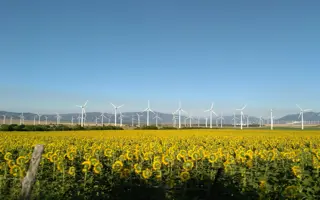HOW DOES THAT WORK? - Hydroacoustics
HYDROACOUSTICS
The ocean remains the earth’s most uncharted territory, but is now able to be accessed by hydroacoustics. This enables scientists, environmental researchers and military forces to understand more precisely what goes on under the sea’s surface.

At the heart of this study is sonar (SOund Navigation And Ranging) technology, which had its genesis during the latter stages of the World War I with the emergence of submarines – and the need to track them. Underwater objects generate sound-pressure waves that radiate in all directions. Changes in pressure are captured by manmade sub-surface sensing devices such as sonobuoys, widely used in oceanographic research, anti-submarine warfare and search and rescue activity.
A combination of frequency, wavelength and amplitude determine how we ‘see’ or ‘hear’ sound waves. The mechanical properties of water mean that sound moves faster in water than air, although water temperature and pressure also influence its speed through water. Higher sound frequencies yield better image resolution, but only over short distances, while lower frequencies provide poorer resolution but can travel much further.
Active sonar devices generate ‘pings’ to find objects, then await a returning echo to assess the size, range and orientation of the object. Passive devices, preferred by defence forces wanting to remain ‘invisible’ themselves, listen for sound waves emitted by underwater objects. Multiple passive arrays can pin down their quarry by utilising triangulation techniques.
With digital technology, miniaturisation and better hydrophones, these compact acoustic sensing devices are shrinking in size but growing rapidly in capability.
Keep up-to-date with Ingenia for free
SubscribeOther content from Ingenia
Quick read

- Environment & sustainability
- Opinion
A young engineer’s perspective on the good, the bad and the ugly of COP27

- Environment & sustainability
- Issue 95
How do we pay for net zero technologies?
Alex Keeler: Electrifying trains and STEMAZING outreach

- Civil & structural
- Environment & sustainability
- Issue 95